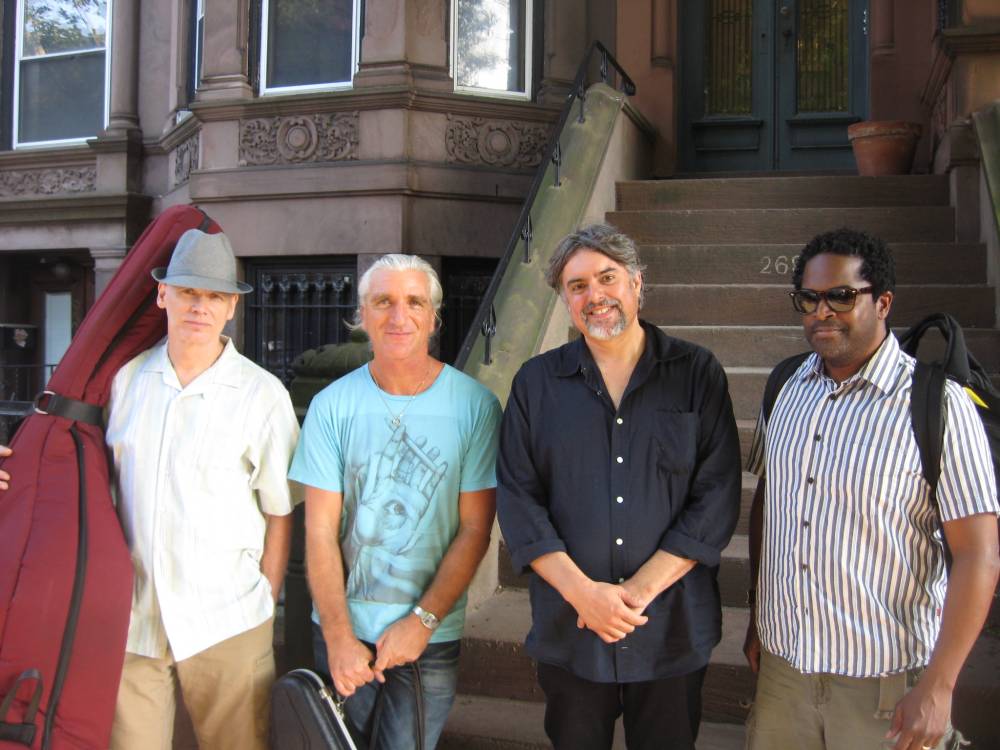
Sometimes it could be an audience crusher: a sound that gained such mass as to have a physical impact, even though you knew it was just an alto saxophone. But then David Ades (pronounced “Addiss”) generated a singularly wide, wild and potent braying. He also summoned surging joy and a lighter-than-air sound that ached with a desolation to shatter audiences in another way.
Two months after Bernie McGann’s death Australian jazz has lost another key alto saxophonist. For Ades music was no flighty matter, but the stuff of life and death. One dedicated oneself to it completely, and in return it was kind enough to allow a comprehensive means of expression.
His particular mentor was the percussionist/composer Phil Treloar, who confirmed Ades’s instinct that music’s building blocks were not notes, but humanity, trust and empathy. These made it safe to express oneself; to dispense with surface trappings.
Born in Bournemouth, England, in 1961, Ades was the third child of Shirley and Joe. Joe, who had left school at 14 to spruik in Manchester’s markets, would wind up a New York celebrity: so successful at selling vegetable peelers on the streets that he drank Verve Cliquot each night in the finest establishments, and was immortalised in a 2006 ITAL Vanity Fair ITAL feature.
In 1969 the Ades family came to Australia as Ten-Pound Poms, settling in Sydney’s eastern suburbs, where Ades attended Rose Bay Primary and Vaucluse High School. Thanks to his father the home echoed with jazz as he grew up, and at 11 he took up the drums, only to abandon them five years later in favour of surfing, a passion vigorously pursued until the end. He never abandoned music entirely, however, teaching himself recorder and flute, and learning theory at the Conservatorium.
After reading a book about Charlie Parker Ades bought one of the saxophonist’s albums, and was floored by sensing an inner life bursting through the confines of music. He hastily bought a friend’s alto and, untutored, spent a day playing out all his anger and grief at his parents’ separation. He studied with Bob Bertles, and practised up to 10 hours daily for the next 18 months. His father took him to Willoughby Hotel where he first sat in with a band, regurgitating a Parker solo. He enrolled at the Conservatorium, but dropped out after a year in favour of going to the source: New York.
There Ades listened, learned and played. He also developed a cocaine habit, and, as he put it “all the arrogance that came with it”. An older saxophonist, George Clark, roundly dressed him down for his behaviour and took him on as a student.
Drug issues recurred when Ades returned to Sydney in 1983, partly caused by artistic self-doubt. He eventually battled his way out of this cul de sac, and at the time of his death had touched neither drug nor drink for 17 years.
He worked in the bands of Serge Ermoll and Keith Stirling, and then joined Treloar’s influential Feeling To Thought in 1987, with fellow saxophonist Mark Simmonds and bassist Steve Elphick.
In 1991 he recorded his own ITAL Bird On A Head ITAL album, an adventurous jazz-funk affair featuring such players as the Necks’ Chris Abrahams and Tony Buck and the late Jackie Orszaczky. Having married Melissa Thompson, a painter, he moved to Bali in 1993, where he worked in bars, toured and even played with Herbie Hancock.
After five years they repaired to Byron Bay where Ades formed the potent FATS with trumpeter Scott Tinkler (recording two albums), and spent five years teaching at Southern Cross University. Melissa, meanwhile, had been diagnosed with breast cancer, and Ades lovingly nursed her through her final years.
He often guested with the popular Cat Empire, and an album with the Matt Keegan Trio inspired him to record again under his own name. Made in New York with players who had become regular collaborators on Ades’s many trips there, A Glorious Uncertainty was his masterwork.
In 2012 he was diagnosed with lung cancer. He continued to perform at the highest level, and even returned to New York to record a yet-to-be released follow-up album. He died at home on November 8, and is survived by his partner Claire, step-daughter Amelia, sister Ruth and brother Sam.